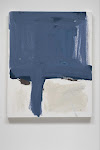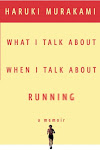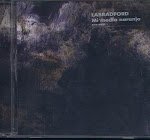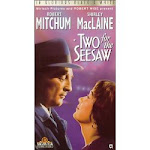
 Jason Freeman, Amy LaVere, Craig Brewer, John Still, Jeff Pope(l to r)
Jason Freeman, Amy LaVere, Craig Brewer, John Still, Jeff Pope(l to r)The Company: from the Memphis Flyer #939
Craig Brewer's local actors keep their feet on the ground.
By CHRIS DAVIS
Photographs by JUSTIN FOX BURKS
Craig Brewer so badly wanted Kim Richards to play Christina Ricci's mother in Black Snake Moan, he had his people search far and wide to find the retired, relatively obscure actress who seemed to have dropped from the face of the earth. He wanted to use Richards for one reason: He'd had a terrible crush on her since 1975, when the child star played the role of Tia, a magical alien in Disney's sophisticated kid flick Escape to Witch Mountain.
"After shooting, [Kim and I] took a walk, and while we were walking I kind of put my arm around her," Brewer says playfully. "And I remember wishing I had some way to go back in time and find that chubby kid I used to be and tell him everything that was going to happen to him."
Success has its privileges, and, thanks to Hustle & Flow, Brewer now has the ability to indulge his inner child a bit as well as the clout to recruit A-list actors such as Ricci and Samuel L. Jackson. But after three feature-length films showcasing the work of Memphis actors, artists, and musicians, there's still nothing that revs him up like talking about his adopted hometown and the underappreciated talent it attracts.
"Whenever I come home after working on a project, I can't help feeling this sense of look at what we made together," he says. "I get completely giddy with this feeling that [Memphis artists] are finally leaking out."
Though set in rural northern Mississippi, the faces in Black Snake Moan look an awful lot like Midtown. Veteran stage actresses Kim Justis and Jo Lynne Palmer take a pair of delightful turns as an easily shocked waitress and an impeccably coiffed Southern matron. Fifteen-year-old Overton High School student Neimus K. Williams plays the pleasantly surprised victim of Ricci's amorous advances like an old pro, while Brewer alums John Malloy and T.C. Sharpe say more with a stupefied look than most actors can accomplish with a monologue. John Still, the seedy chop-shop boss from The Poor & Hungry, plays a drunk and disgruntled ex-Marine. Jeff Pope, a horny trick from Hustle & Flow, pops up in Black Snake Moan as a suburban drug dealer, while Claude Phillips, Hustle's memorable junkie, makes an equally memorable impression as the owner of a stripped-down Mississippi juke joint.
Set to gritty blues riffs arranged by Memphis musician Scott Bomar and recorded by artists such as Jim, Luther, and Cody Dickinson, Charlie Musselwhite, Roy Brewer, Kenny Brown, Jason Freeman, and Alvin Youngblood Hart, all these contributions make up a part of the bigger picture. Like the stock players assembled by directors such as John Ford and Preston Sturges, Brewer's local talent brings an abundance of quirkiness, color, and authenticity.
"It reminds me of my ancestors," Brewer says of his local human resources. "Some of them sold eggs. Some of them got into milking cows. All the way back to the Civil War, they were always looking for something different. I can imagine them saying something like, 'Well, it looks like ol' Craig's on to a new cash crop.' Conversely, as Brewer takes long walks with his childhood fantasy and imagines Memphis culture as an exportable commodity, his actors refuse to become starstruck.
"I would really just like to be a steadily working character actor," says musician and occasional stage performer Jeff Pope, whose character supplies the drugs that send Ricci's already out-of-control character into a three-day blackout. "I remember when Craig invited us all up on stage at Sundance," he says. "I felt overwhelmed, because I didn't think I'd really done anything special."
"I'm going to the Black Snake Moan premiere, and I'm going to wear a pair of zebra-striped shoes when I walk the red carpet," says Amy LaVere, the throaty singer whose resemblance to rockabilly sex symbol Wanda Jackson landed her a role in the Johnny Cash biopic Walk the Line. "I'm wearing them in honor of Jim Dickinson's Zebra Ranch," she asserts. Like Pope, LaVere has always wanted to act but found music to be a more accessible mode of expression. Even now, recording and touring come first.
"I'm just not in a position to go to L.A. and find an agent," she says. "I've got a new record coming out in May, and I have a responsibility to support that record to help recoup costs. So acting is something I can't aggressively pursue."
Still is an actor without an agent who refuses to attend cattle-call auditions. In the early '90s, the voiceover artist best known for his work with WKNO-TV and radio decided to try his hand at acting and took classes so he wouldn't sound so much like a radio announcer. Shortly thereafter, he landed a lead role in Brewer's first completed film, The Poor & Hungry, and went on to play smaller featured roles in Hustle & Flow and Black Snake Moan.
"I just don't have good audition skills," Still says. "But Craig thinks I'm a good actor and he's an actor's director. He knows how to get the performance he wants from me."
Freeman doesn't appear on camera in Black Snake Moan, but his work is crucial to the film's success. Freeman, a moaning roots musician who got his start busking on Beale before breaking out with his jug-grass ensemble the Bluff City Backsliders, helped to teach Jackson how to play his purple Gibson guitar.
"This isn't the sort of thing I ever sat down and visualized myself doing," says Freeman, who fell in love with the blues when an older brother brought home a copy of Muddy Waters' Hard Again. "But it doesn't completely surprise me either. I always knew I'd be -- well, not famous but involved in interesting and creative things."
"I'll never forget when Claude Phillips first auditioned for Hustle," Brewer says of the renovations contractor turned character actor. "I had somebody else in mind, but this guy really looked like an old sessions player for Stax. I felt his desperation when he was trying to sell this keyboard [for a bag of weed], and that's when I realized that [the lead character] DJay could be staring straight at his own fate. Even if he had success as a rapper, he could hit the juice or smoke too much weed and end up in the same position. So I cast Claude ... and everybody from Chris Rock to Spike Lee has asked me about him."
"One time when we were shooting, Craig just hollered out, 'I love seeing Memphis people in my movies!'" Phillips recalls. "And let me tell you, that was a real turn-on."
Date created: 02/22/2007
URL for this story: http://www.memphisflyer.com/memphis/Content?oid=24924
URL for this story: http://www.memphisflyer.com/memphis/Content?oid=24924




















